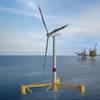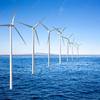TCC, USC Join Forces to Cut Emissions
Leading Hong Kong ship-owner Tai Chong Cheang Steamship Co. (TCC) and the University of Southern California’s Viterbi School of Engineering (USC) announced a significant research breakthrough aimed at tackling harmful ship-source emissions today.
The research was conducted as part of a research program focused on improving marine diesel combustion efficiency and the reduction of exhaust gases via the application of nanosecond pulsed generation technology.
With the support of TCC, researchers at USC Viterbi’s Pulsed Power Research and Combustion and Fuels Research Laboratories have for the past five years focused upon improving combustion efficiency in vessel diesel engines.
The aim of the research is to cut emissions of unburned hydrocarbons with concurrent plasma ignition and significantly lower fuel consumption while, at the same time, reduce the release of nitrogen oxide (NOx) and particulate matter.
The technology uses tailored electrical nano-pulses to change the underlying chemistry, either at the point of exhaust or during combustion.
The group’s experiments both in laboratories, and via a series of recent “sea trials,” consistently cut nitrogen oxide emissions at the point of exhaust by almost 90 percent and reduced particulate matter by up to 75 percent.
The research findings announced today coincide with the United Nations Conference on Climate Change taking place in Paris this week.
The emissions research project was initiated and funded by TCC under the leadership of Mr. Kenneth Koo, Chief Executive Officer of TCC, as a Corporate Social Responsibility (CSR) initiative.
It was also in response to one of the mandates issued during the 2009 Copenhagen Climate Summit requiring the shipping industry to impose caps on ship-source emissions.
This dramatic improvement in efficiency was achieved utilizing the radically different and more cost effective approach of nano-pulse power, compared to the standard “scrubbers” typically used on vessels that require training for crews and maintenance.
The researchers have also conducted substantial tests, using the same technology towards improving the combustion efficiency in marine diesel engines, so that they can operate at their optimal continuous rating output.
The current nano-pulse power R&D is now in the final phases of development. It is being conducted by a team of researchers in the Ming Hsieh Department of Electrical Engineering and in the Department of Aerospace and Mechanical Engineering at USC, including Martin Gundersen, Andreas Kuthi, William Schroeder and Fokion N. Egolfopoulos.
Yannis C. Yortsos, dean of the USC Viterbi School of Engineering, welcomed the recent findings and stressed their importance in helping reduce emissions and improve efficiencies in the maritime sector,“ The application of this new technology, whether at the point of the exhaust gas flow, and/or during the combustion engine itself, promises to substantially alter the way commercial shipping operates both in terms of diesel engine efficiencies and in the reduction of emissions, for the benefit of the environment.”
Mr. Koo said, ”We believe that this game-changing solution will allow owners and managers to unshackle themselves from the present constraint of slow steaming as the only means to realize lower fuel consumption. I believe this research and its culmination announced today could have fundamental long- term implications for the global shipping industry.”
“It is exciting to push these ideas forward and work with companies that are proactively seeking solutions to industry problems and issues that affect the environment and society at-large. We are very grateful to TCC for supporting such pioneering research with direct impact on the environment,” said team lead Martin Gundersen.
This research and development address the present large fleet of vessels powered by large bore marine diesel engines already in service and an equally large number of new construction vessels due for delivery within the next three to five years.
Mr. Koo said, “While game-changing solutions through alternative energy consumption, especially with LNG, are likely the long term future of the shipping industry, the infrastructure developments for LNG being in their infancy and the prospects of retrofitting present ships with LNG machinery system very unlikely at best, we must research solutions that addresses present designs to tackle present challenges.” He further added, “The maritime industry has been slow in identifying emissions caps since the Copenhagen Summit six years ago. Marine diesel engine combustion efficiency must become the focal point because present designed combustion efficiency peaks at 50 percent, meaning that half of the heavy fuel oil (bunker fuel) ends up as unburnt hydrocarbons, which are then emitted in the form of harmful CO2, NOx and other particulate matter.”
Marine diesel engine makers have largely elected not to tackle ship-sourced emissions at its combustion efficiency roots. However, the associated peripheral technical solutions, such as the use of scrubbers, propeller design, hull form improvement, and improved hull paint coatings are constrained by external factors such as costs, challenging retrofitting processes and operation under variable weather factors. The result is slower steam modes of navigation, if one were to drastically cut fuel consumption.
The absence of aggressive but in-depth research into technical solutions to address fuel consumption and ship-sourced emissions meant that to date, only commercial solutions have been implemented to fill in this considerable void.
“Slow steaming, as well as super slow steam modes of navigation to drastically cut fuel consumption, are just band-aid solutions with the sole commercial objective to cut costs,” said Mr. Koo.
He noted that marine diesel engines were not designed to operate at very low RPM and power output and he argued the industry must go back to the basics by addressing combustion efficiency thus enabling solutions to be demonstrated to reduce, reverse and recover ship-sourced emissions before they are emitted.
“The potentially catastrophic damage that such commercial practices causes, not only premature wear and damage to marine diesel engines through abnormally prolonged navigation under very low RPM and very low output condition but it also causes accelerated damage to other machinery components and systems,” he said.
Leading ship classification society American Bureau of Shipping (ABS) has been invited by TCC to review and assist with certification of the emission remediation technology and improved combustion technology for use on ships.














